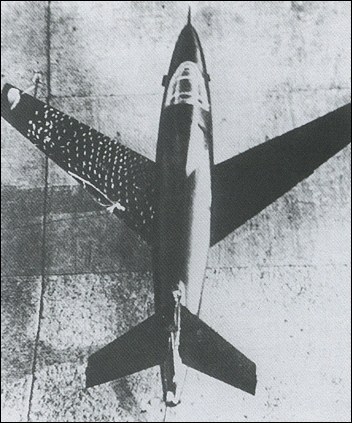| mike1204, e-mail, 29.11.2009 14:05 The Soviet OKB of P. V. Tsybin, which began with troop-carrying gliders and after the war built the LL (flying laboratory) series of high-speed research aircraft, including examples with a forward-swept wing. Perhaps knowing something of Lockheed's U-2, the V-VS asked for an interception-proof reconnaissance aircraft to reach 3000 km /h (1,862 mph) at 30000-m (98,425-ft) altitude. Tsybin helped by producing the NM-1 (or LL 3) research aircraft, with twin AM-5 engines on the blunt tips of a stubby trapezoidal wing, and a very slim body carrying a normal tail. It was not especially fast, but intended to reach Mach 2.80 in a dive. Test pilot A-K Sultan flew the NM-1 as an unpowered glider (above, with tufted port wing for aerodynamic observations by chase aircraft), which was towed by a Petlyakov Pe-2 in 1957, and it later made ten powered flights with powerplant installed, but it was considered (politically) a dangerous aircraft and, to some degree, overtaken by events – such as reconnaissance satellites, about which few Westerners could teach the Soviets anything. reply |









